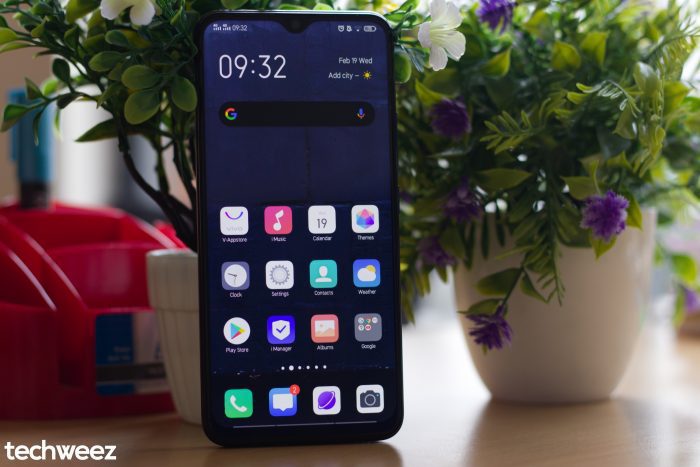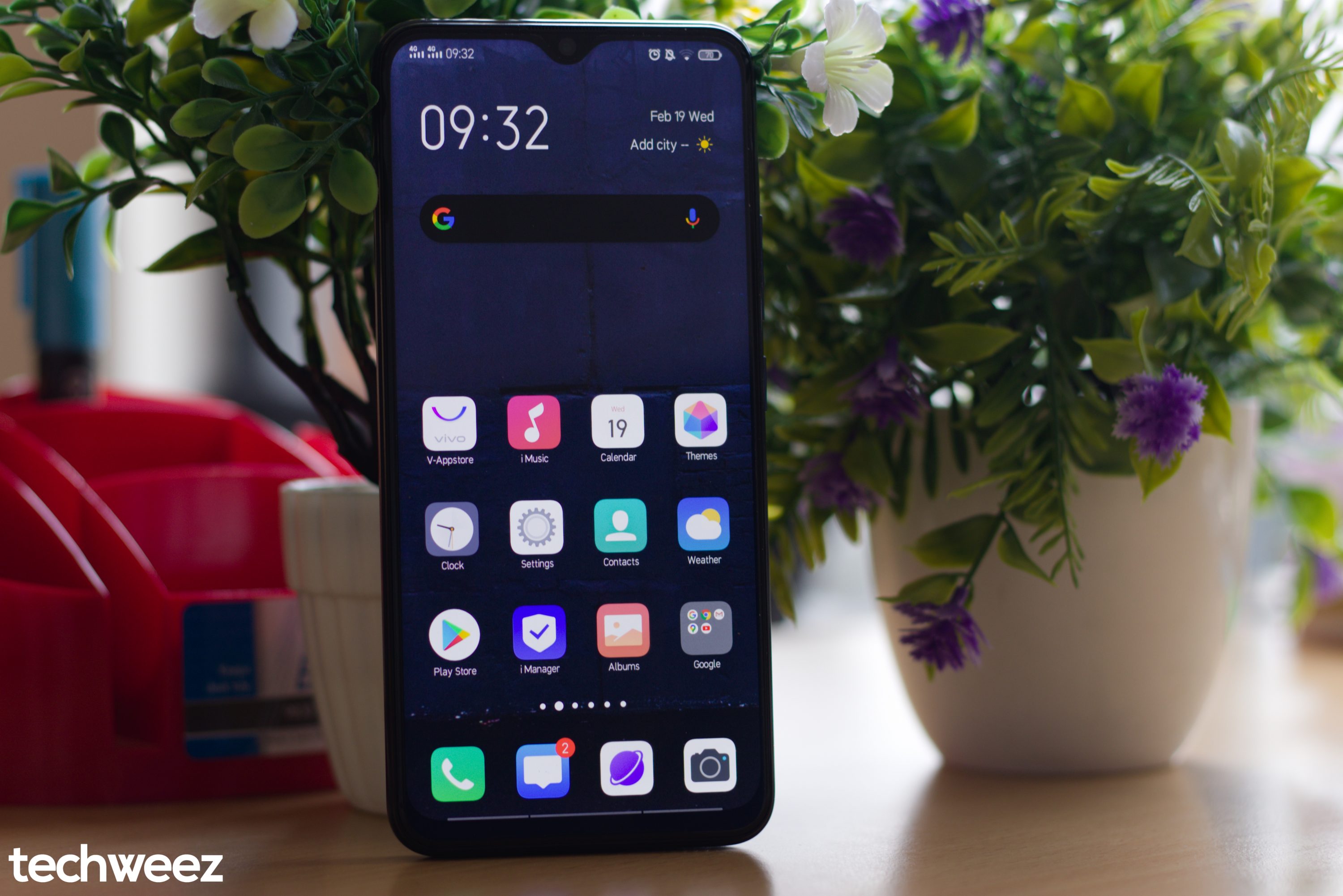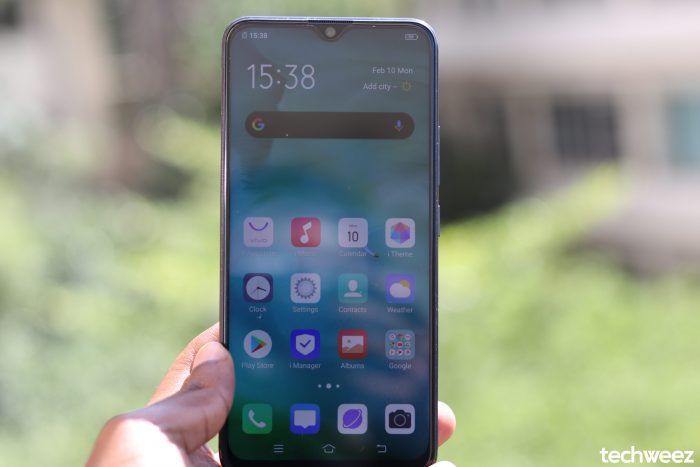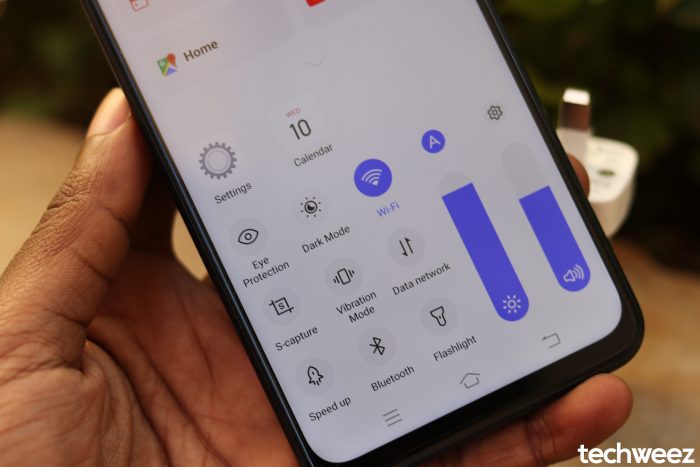
vivo recently entered the Kenyan market and already have some of their smartphones on shelves in their retail stores. Their Y series and V series are available locally but the focus of this article is on the potential that the Y Series has in this Kenyan market.
vivo’s Y series of phones range from the entry-level tier to the lower midrange tier. The phones include the vivo Y19, vivo Y17, vivo Y15, vivo Y12, vivo Y11 and vivo Y90. Here’s what they pack in brief.
vivo Y90 features a 6.22″ 720p Halo FullView™ Display, 2GB RAM and 32GB onboard storage, Face Access for face unlock as there’s no rear fingerprint sensor, a 4030mAh battery, 5MP selfie camera and 8MP main camera, Funtouch 4.5 and Android 8 Oreo powered by Mediatek MT6761 Helio A22 processor. It goes for Ksh 10,999.
vivo Y11 features a 6.35″ 720p Halo FullView™ Display, chromatic and a colour gradient back that hosts the rear fingerprint sensor, the dual AI-powered rear camera setup that includes a 13MP and a 2MP depth camera. There’s also an 8MP selfie camera with AI face beauty. Under the hood is an octa-core Qualcomm Snapdragon 439 processor, 3GB of RAM and 32GB of internal storage. Android 9 Pie and Funtouch 9.1 run the show. The phone is powered by a 5000 mAh battery that juices up through a 10W charger. It goes for Ksh 13,499.
vivo Y12 rocks a 6.35″ 720p Halo FullView™ Display, similar gradient back as the vivo Y11 that uses the magical colour fusion tech. At the back, you get AI-powered triple cameras that include a 13MP Main Camera, 8MP Super Wide-Angle Camera and 2MP Depth Camera. An 8MP front-facing camera for selfies interrupts the near bezel-less display as it gets housed in the waterdrop notch just like the vivo Y11. You get Android 9 Pie and Funtouch OS 9. Inside, you have an octa-core Mediatek MT6762 Helio P22 processor, 3GB RAM and 64GB of internal storage. A 5000mAh battery powers the phone and it sells at Ksh 14,999.
vivo Y15 comes with a 6.35″ 720p Halo FullView™ Display, colour-gradient back, same triple rear camera setup as the Y12 which includes a 13MP main camera, 8MP super wide-angle camera and 2MP depth camera. However, you get an upgraded selfie camera – a 16MP front-facing camera in the same waterdrop notch. Android 9 Pie and Funtouch OS 9 run the show together with a Mediatek MT6762 Helio P22 processor, 4GB of RAM and 64GB of internal storage. vivo Y15 is powered by a 5000mAh battery and goes for Ksh 21,999.
vivo Y17 features a 6.35″ 720p Halo FullView™ Display, colour-gradient back, triple rear camera setup same as the vivo Y15. For selfies, you get a 20MP front-facing camera in the same waterdrop notch. Internals include 4GB of RAM and 128GB of onboard storage, Android 9 Pie and Funtouch 9. An octa-core Helio P35 processor and a 5000mAh battery with 18W Dual Engine fast charging power the phone that sells at Ksh 24,999.
Lastly, is the vivo Y19 that packs a 6.53″ 1080p Halo FullView™ Display, colour-gradient back that has the rear fingerprint sensor and triple camera module similar to the vivo Y17 that includes a 16MP main camera, 8MP super wide-angle camera and 2MP macro camera. A 16MP selfie camera sits in the waterdrop notch. You get 4GB OF RAM and 128GB of onboard storage, Android 9 Pie, Funtouch 9.2 while a Mediatek Helio P65 chip runs the device. A 5000mAh battery powers the phone and uses 18W Dual Engine fast charging plus featuring reverse charging at 5W. vivo Y19 sells at Ks 26,999.
Are vivo’s Y series of smartphones worth buying?
This will depend a lot on your preference and Vivo has a range of devices that offer different features at different price points in the Y series. All in all, vivo’s Y phones come with decent features with some that beat their competition and in some places, lag behind. For example, you get huge 5000mAh batteries but lack Type-C charging ports especially since some rival phones in the 20K to 30K range have it.
It’s a mixed bag in terms of photography, at least from my experience using the vivo Y19. The front-facing camera produced decent selfies with accurate skin tones but when it came to features like bokeh, it was a game of chances. Regular photos had mixed results too especially when it came to colour reproduction, most shots lacked saturation. I literally had to edit them to make them decent enough for sharing on social media platforms.
When you look a the phones aesthetic-wise, they are well designed especially the likes of the vivo Y12, vivo Y15 and vivo Y17. The colour gradient backs are sure going to grab attention whenever you place these phones on the table, during a call or walking in the streets.

The displays look amazing too thanks to the near bezel-less design, so those into binge-reading articles or books or binge-watching multimedia content are going to love them.
The phones in the Y series especially from the Y11 to the Y19 promise to handle everyday tasks with ease and heavy multitaskers shouldn’t worry about performance issues.
Even though they lack Type-C charging port, vivo’s Y phones exhibit amazing battery life thanks to their 5000mAh batteries – in light use, you can get up to 2 days and heavy use can last a day and a half. The higher-end models in the Y series boast of having support for Dual Engine fast charging so you can juice up the phones in no time. The vivo Y19 can charge up to 70% from empty in an hour and to 100% in a little over 90 minutes. It’s not superfast but commendable.
Funtouch OS has its pros too such as Android 10‘s dark mode. There’s a toggle in the settings and quick settings that brings system-wide dark mode. A good thing worth noting is that there are no ads in the UI as seen in some other UIs.
Where vivo needs to work on to make the Y series devices worth getting
Pricing. vivo Y series of devices take up the 10K to 30K range in our smartphone market. The budget to lower midrange segment for Android phones in Kenya is already crowded and the cost of the phone put up against the value the phone brings is one major factor Kenyans consider before buying a phone.
You’ll notice in the pricing levels of the vivo Y series that they have similar features to other rival phones that sell for cheap and even for some, the same price gets you even better phones in terms of features.
vivo needs to figure out how to push phones that bring more value for money especially since its a new brand to the Kenyan market. If there’s anything to learn from other smartphone brands that tried penetrating this country, it is that the Kenyan smartphone market is unforgiving.
Cameras. vivo needs to up their game in the photography department for their Y devices especially their upper range. Make them versatile enough with proper features, refine the camera interface as it is confusing at the moment and people will flock to buy the Y devices. Borrow some hints from the V series – I used the vivo V17 Pro and loved the camera performance on that device.
Software. Most of the phones in the Y series come with Android 9 Pie and Funtouch OS. Funtouch OS has an iOS-ish look and regular users will have to climb the learning curve to master using it – from swiping up to access quick settings, the lack of a default app drawer. The settings UI is jumbled up and can be confusing if you’re trying to tweak some features.
However, it’s nice that the UI has dark mode toggle but it would be nice to launch new devices in the Y series with Android 10 baked in – so far we don’t have any info on Android 10 updates on the current devices.
vivo should also aim to trim the bloatware on Funtouch UI to make the experience even better for the Y series of devices.
Add more RAM and Storage options. These two features matter and if vivo is to compete with smartphone brands who’ve already set up shop here, they’ll have to increase RAM and storage options. Their higher-end models should have 6 or 8 GB of RAM and standard 128GB of onboard storage if they plan to beat the competition.
Bring 1080p displays. The vivo Y19 is the only device in the Y series that has 1080p display and vivo should trickle down this feature to its other devices in the higher-end Y series.
Bring Type-C ports. If vivo is planning to launch new devices later in the year in the Y series, they should feature Type-C port. We already love the huge 5000mAh batteries. Dual Engine fast charging should also feature on the other models which coupled with Type-C charging would make the vivo devices absolute battery champs.
Conclusion
vivo devices in the Y series already feature decent specs but they need a little polishing to bring value for money especially at their price points. They need to refine the overall experience in order to move from devices worth considering to devices worth getting while outright beating the competition.































